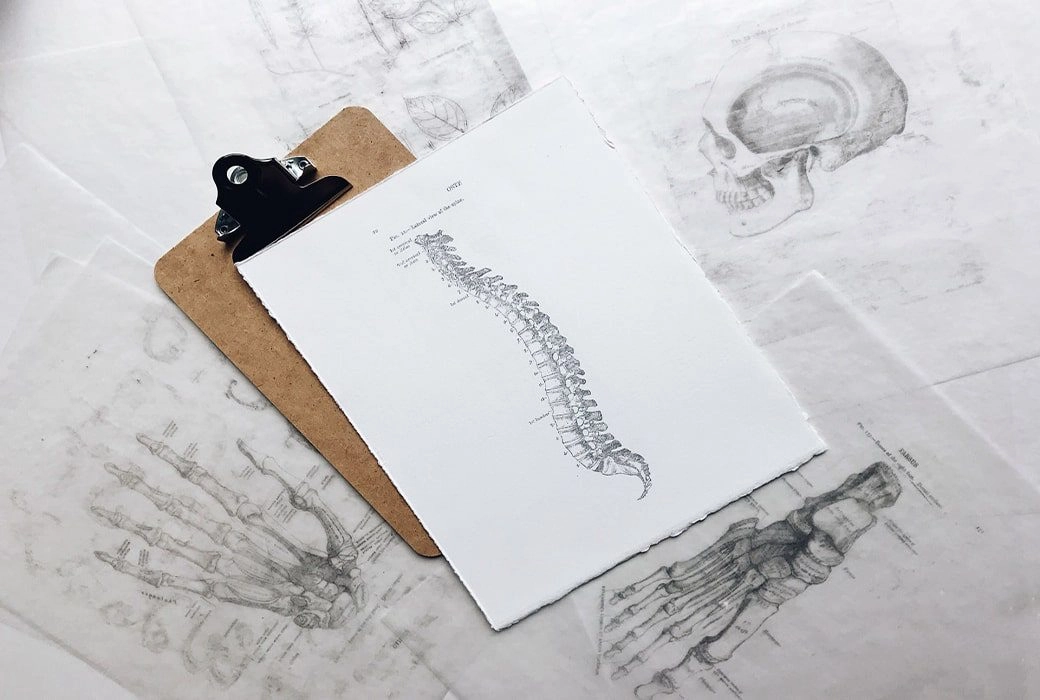Lumbago – it’s a serious problem that can cause excruciating pain. While common, many are concerned when its symptoms start to appear. Let your local Anchorage chiropractor give you the details:
Lumbago ( or low back pain) is a condition that strikes the lower spine. Many times, it’s due to an injury. Depending on how bad it is, the pain can range anywhere from mild to severe. This post will explore more about what it is and how you can both treat and prevent it.
Anchorage Chiropractor: What are the Symptoms of Lumbago?
There are a few symptoms this condition can cause.
- Low back pain
- Soreness in your upper legs
- A curving spine
- Muscle numbness
- Muscle spasms
- Extra painful menstrual cramps
Is Lumbago a Real Disease? How is Lumbago Diagnosed?
To many, lumbago is considered a common problem, not a disease. Back pain statistics show that almost 80% of people will suffer from back pain at some point in their lives. While a frequent issue, it can sometimes be due to an underlying problem.
Lumbago can be caused by a disease, including spinal stenosis or degenerative disc disease. These will wear away joints and put strain on your muscles – all of which can lead to lumbago.
To determine if you have lumbago a few tests will need to be done. This includes a physical evaluation of the affected area, x-rays, and a possible urine test. These will help a medical professional identify where the issue is and how it can be treated.
Does Lumbago Go Away On Its Own? How Long Does Lumbago Last?
This depends on how severe your condition is. If you’re having minor side effects, rest and certain exercises will usually help. However, if your lumbago is caused by a herniated disc, it won’t disappear until that’s fixed.
In most cases, lumbago will last for about six weeks. If it persists after this, you’ll want to visit a medical professional. You’ll need to visit them sooner though if you have symptoms like:
- Loss of bladder
- Inability to move your legs
- Sudden leg numbness
- Fever

Is Lumbago the Same as Sciatica? – Your Anchorage Chiropractor Answers
Lumbago and sciatica have similar symptoms, but they are different. Lumbago creates pain in a specific area in the lower back. Sciatica affects the nerves and causes painful tingling sensations up and down your legs.
What is Lumbago with Sciatica?
As mentioned above, lumbago and sciatica are separate problems. Despite this, if you suffer from sciatica pain, it could cause lumbago. If the sciatic nerve (situated in your lower back) is pinched, the area will become irritated. This could end up forming inflammation that could lead to lumbago.
Is Lumbago Fatal?
Lumbago isn’t fatal, but it can cause excruciating side effects. But, you don’t get the underlying issue under control, it could increase your risk for chronic disease. This in return could end up being fatal if it’s not treated.
How to Treat Lumbago?
This condition can be fixed but it will take time and patience. Below are a few methods you can try to get rid of back pain.
1) Do Lumbago Exercises.
One of the best ways to naturally treat this problem is to do exercises. These will stretch out your muscles and encourage them to stop spazzing. Many times, exercises will also keep your joints and bones strong. This will stop them from slipping out of place.
While helpful, make sure to never overdo them. If you try to push through the exercises, you risk making your lumbago worse.
Here are three lumbago exercises you can try.
- Spine Release Stretch
This stretch will avert pressure from around your spine. To begin, kneel on the floor. Lower your body until your forehead touches the ground and your buttocks touch your heels. As you do so, stretch your hands on your sides so that they touch the ground. Hold for about a minute and then release.
- Partial Crunches
Crunches might seem like they would cause more harm than good, but they are useful in the fight against lumbago. This is because they build up your core muscles.
To do a partial crunch, lie with your back on the ground. Bend your knees so your feet are firm on the ground. Take your arms and fold them behind your head. Use your hands to cradle it. Once this is done, use your hands to gently lift your upper body. Hold for three seconds and then return to the ground. Repeat this process eight more times.
- Wall Sits
Wall sits are known for building muscle around your lower body. In addition to this, they don’t put strain on your spine. This way, you can keep your body active but not increase your lumbago pain.
The first step is to lean your back against a wall. Gently squat while keeping your back flat against it. For better stability, carefully press your back into the wall. Hold this pose for about 10 seconds and then lift your body. Repeat this process 10 more times.
If you’re not comfortable with stretching, you could instead try water therapy. You can hop into a swimming pool and slowly walk around in it. The buoyancy will make it feel as if you’re floating, but you’ll be stretching your lower back muscles. This is a great option if you have severe pain and are unable to move freely.
2) Visit Your Chiropractor.
Another way to treat lumbago is to utilize chiropractic care at your local Anchorage clinic. This holistic form of medicine uses special adjustments to release tension. A chiropractor will also feel around your spine and lower back to determine if a slipped disc or joint is to blame for your pain.
There are a variety of adjustments a chiropractor might do depending on your needs. Two of the most common are spinal manipulation and mobilization.
- Spinal Manipulation
Spinal manipulation uses high-velocity and short thrust techniques. Rather than using devices like an activator to provide relief, chiropractors will rely on their hands. They’ll position them in various ways and then press on an area near your spine to release tension and pain.
- Mobilization
While your local Anchorage chiropractors will use their hands for mobilization techniques, they won’t twist or pull your body. This is the gentlest option and is typically used for people who have extreme pain.
Many chiropractors will also offer massage therapy. This can help reduce tension while releasing endorphins which are natural painkillers. Some types they might suggest doing include:
- Swedish
- Trigger point
- Deep tissue
- Reflexology
3) Try Heat Therapy.
While it won’t fully treat lumbago, heat therapy can calm its side effects. When you place a heating pad on the area, it will boost circulation. This allows fresh oxygen and nutrients to the area. These can release toxins and stop inflammation that might be making your condition worse.
You can place a hot pad on the affected area for relief. This will calm pain and reduce inflammation. You could also stand in a hot shower and let the water fall on your back.
Keep in mind though that the water shouldn’t be scalding. This could burn your skin and make the issue worse.
Also, make sure to be consistent. If you only use heat therapy every few days, you won’t give your body time to heal. Instead, you’ll just be briefly masking the pain.
4) Eat Anti-Inflammatory Food.
Another great way to stop lumbago pain is to consume natural anti-inflammatory food. These won’t only fill your body with important nutrients, but antioxidants that will destroy swelling.
Some of the best options to fight against inflammation include:
- Carrots
- Avocados
- Salmon
- Olive oil
- Almonds
- Ginger
- Grapes
- Cherries
Make sure to stay away from items that are high in sugar or fat. These can worsen your symptoms because they encourage inflammation by raising your glycemic index.
5) Consider Acupuncture.
Acupuncture can be very beneficial at stopping lumbago side effects. Studies have shown that participants who had lower back pain saw a significant reduction in their pain after an acupuncture session.
An acupuncturist will stick small, thin needles into your body. These aren’t randomly placed, but instead pushed into trigger points. This is designed to release toxins in them and restore the area to good health.
The needles will stay in your skin for a few minutes before they are removed. This will give them plenty of time to refresh your body.
Remember, you might need to make a few appointments before you see lasting results. While it can help reduce pain, consistent sessions will work to eradicate it.
6) Wear a Brace
Sometimes lumbago gets worse because of our posture. If you slouch, it could curve your spine and cause misalignment. If your lumbago is caused by a spinal condition, this will only increase your problem.
Because of this, it might be ideal to wear a brace. While it might be strange at first, it will encourage you to use proper posture. Over time, you might notice that your pain subsides because your spine has time to heal.
If you’re not sure which brace would be ideal to use, consider talking it over with your chiropractor. They can guide you to one that will be the most comfortable and beneficial for your needs.
Can I Prevent Lumbago?

Yes, you can prevent lumbago. Here are some tips you can use to do so.
- Never sit in one position for long. This can put strain on your spine. If you need to, consider investing in lumbar support.
- Stay active, but don’t overwhelm your body. A simple walk around the block is enough to help prevent this problem.
- Watch your posture. If you slouch, it will curve your lower back and cause it to shift out of place.
- Drink plenty of water. This will lubricate your spinal discs and stop them from rubbing against each other.
Lumbago is an irritating problem that can become severe if not treated. By keeping this information in mind, you can easily prevent and treat it. If it does become a problem, reach out and contact our team of Anchorage chiropractors at Better Health Alaska. We can help.
References
https://www.ncbi.nlm.nih.gov/pmc/articles/PMC4364128/
https://www.ncbi.nlm.nih.gov/pmc/articles/PMC4934575/
https://www.ncbi.nlm.nih.gov/pmc/articles/PMC5597007/










